TT 443: Questions for Gene Gaudette
Introducing the producer of my next release and his boutique label Urlicht AudioVisual
Left to right, the brain trust of Playfair Sonatas: Piers Playfair, yours truly, and Gene Gaudette. (Photo by Walter Smith III.)
Gene is putting out my next record, Playfair Sonatas. The six sonatas are completely written out and played by Miranda Cuckson, violin; Makoto Nakura, marimba; Carol McGonnell, clarinet; Mike Lormand, trombone; Taimur Sullivan, saxophone; and Tim Leopold, trumpet. (I play piano on everything.)
The release date on Urlicht AudioVisual is November 15, 2024.
Scrolling score of “Music Hall (for Carla Bley)” from the Clarinet Sonata…this movement is also now out as a single on all the streaming platforms.
Since Gene has a very interesting label and a very interesting history, I asked him to answer some questions for TT.
Hi Gene! Can you explain something of how you got into music and your history in the business, and give a few career highlights as well?
I started playing clarinet in elementary school, but I got very serious about music while I was in high school. I was a music major in college, and a reasonably good student though not a particularly distinguished composer or instrumentalist. Our college library did have a phenomenal collection of records, including 78s, and great playback gear, so I would frequently indulge in listening sessions. I also did a little bit of work in the college recording studio and at a radio station across town.
After college, I worked at and managed a string of music and video stores, including a stint at the legendary Tower Records store at Fourth and Broadway, which was staffed by some of amazingly talented coworkers: Butch Morris worked in the jazz department while I was there, composer Anthony Coleman in the classical department. Paul Tai, who headed the New World label for years, was also one of my coworkers. I also helped open Tower's store near Lincoln Center, where Guenter Hensler - then with PolyGram - was a regular costumer. I ran into him some years later outside Carnegie Hall when he had become president of BMG, and he suggested I drop by and meet a few people.
Yes, it turned into a job interview, and I worked at BMG for eight years in a variety of different positions. When I arrived, work had begun on the first CD incarnation of a complete Heifetz Edition. That project was a crash course in pretty much every aspect of bringing a complex project to market. I had a bit of input on the Living Stereo CD series, which went well beyond the "thirty or so" titles the honchos assumed would be the limit. I developed dozens of compilations and reissues for the American market, and produced several one-off tracks for some gimmicky compilations - the first one I was credited for was made at Saint Thomas's Church in midtown Manhattan, a very late night recording of the organ transcription of Barber's Adagio played by David Pizarro, engineered by the indefatigable Nat Johnson. But my all-time favorite project was a tiny one — reissuing Virgil Fox’s “Heavy Organ at Carnegie Hall” in Dolby Surround. It sold far better than expected!
And I walked away from it - briefly - probably at the right time. The major labels were locked into the brick and mortar sales model and failed to foresee that they were about to be steamrolled by the internet. I worked for a few years with a communications consulting company connected to a liberal lobbying group, but returned to the business working as a consultant for several independent companies - Andante, Forte Distribution, and SPJ, which owned the Vox/Turnabout catalogue. When Todd Landor, who had managed A&R there, started his own company, Musical Concepts, I helped him develop a system for publishing on-demand custom CD-Rs licensed from Vox.
It was that project - creating digital masters for limited-run CDs - that launched Urlicht AudioVisual back in 2010.
How about an overview of the Urlicht mission and discography?
I originally started Urlicht to focus on CD mastering and production logistics, and I launched the label with an initial plan to put out a few releases a year and focus on projects and repertoire that I found interesting, particularly neglected and new repertoire, and recordings from the pre-stereo era. As time went on, the focus has been on the former, with a couple of unusual releases thrown in for good measure.
I launched the label with a licensed recording by Elisha Abas - his individualistic, extrovert Brahms First Piano Concerto recorded in Cuba with conductor Yoel Gamzou. Both Elisha and I are huge admirers of Ignaz Friedman and Josef Hofmann, and you can hear more than a hint of grand romantic style in Elisha's Brahms, as well as a Chopin disc we recorded early on.
Elmira Darvarova, a phenomenal violinist and former MET Orchestra concertmaster, had founded the New York Chamber Music Festival and the New York Piano Quartet, and they made two recordings for Urlicht in 2012 - the Mahler Piano Quartet and music inspired by Mahler, and music of Joseph Marx and Erich Wolfgang Korngold. She and composer David Amram gave me a green light that September to make a "live bootleg" of Amram's chamber music at the New York Chamber Music Festival at Symphony Space. Fifteen years or so earlier, I had unsuccessfully lobbied BMG to reissue Amram's RCA recordings back in the day, so working with him on that project brought me - and the composer - a great deal of satisfaction.
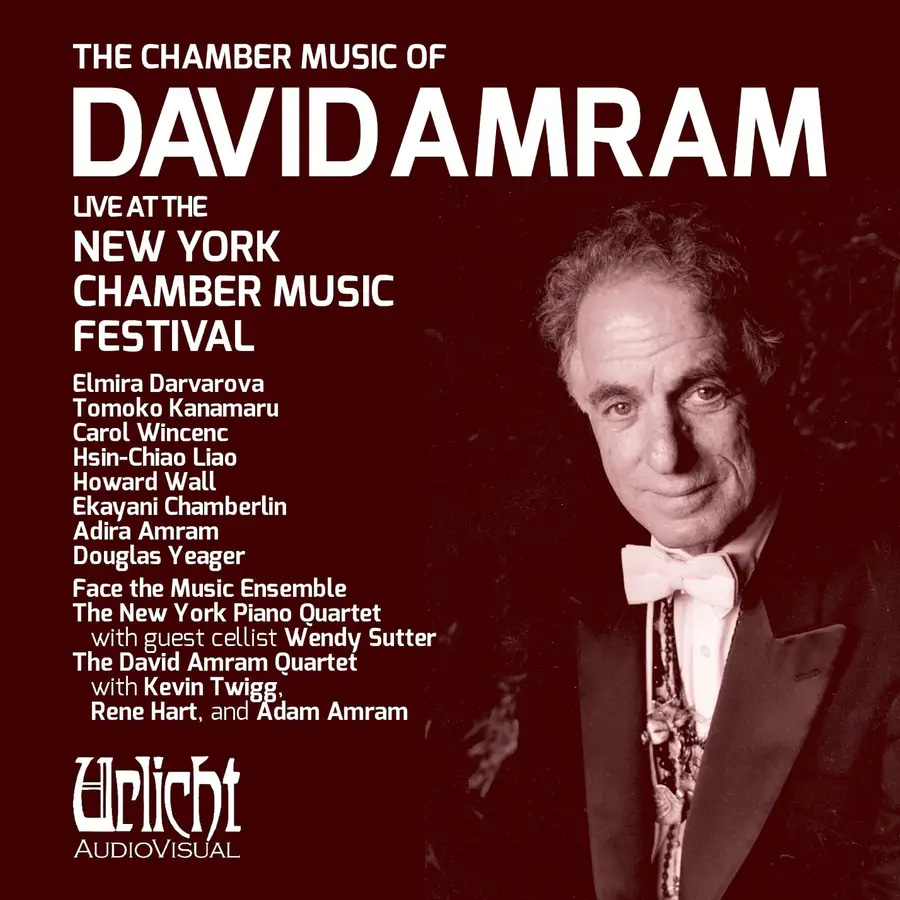
Elmira has also recorded a program of Piazzolla tangos for Urlicht with the late Octavio Brunetti, and a program of solo violin works from behind the iron curtain, appropriately titled "Violin Declamations from the Twilight of the Workers' Paradise." Elmira escaped from then-communist Bulgaria with assistance from no less a master musician than János Starker, and studied with Starker and Josef Gingold at Indiana University. Last year, in honor of Starker's centenary, I issued Elmira's stunning performance of the Kodály Duo with Starker recorded shortly before she fled Bulgaria, coupled with Starker's 1951 recording of the Cello Sonata.
It was through Elmira that I was introduced to Pascal Rogé, and we recorded Poulenc sonatas for various instruments with Pascal "et see Amis" (Elmira, her husband hornist Howard Wall, clarinetist Pascal Moraguès, his brother flutist Michel Moraguès, Pascal's pianist wife Ami Rogé, and NY Phil oboist Liang Wang). Elmira also collaborated with the amazing double bass player Gary Karr - he was a professor at my college (small world!) - and Karr's longtime partner, the late harpsichordist Harmon Lewis, in two CDs of baroque chamber misc by Handel and Barthélémon. You can tell they were having an absolute blast making those recordings!
Gary also figures in a CD that also reissued a recording originally issued on LP by Finnadar featuring one of my favorite conductors, José Serebrier, whom I originally met during my Tower years. The Finnadar disc featured the conductor's "Poema elegiaco" coupled with a muscular performance of Peter Mennin's Ninth Symphony and William Lee's colorful Veri. Gary was the soloist in José's most avant-garde work, "Nueve," with Gary playing and speaking. We had to master that recording from a vinyl test pressing, and it sounds remarkably detailed.
Shortly after Todd Landor issued Michael Hersch's "The Wreckage of Flowers" with pianist Blair McMillen and violinist Miranda Cuckson, we attended one of Miranda's recitals in New York. I met her after the recital, and not long after, we met and she told me that she had recorded Luigi Nono's "La lontananza nostalgica utopica futura" with Christopher Burns, but the recording did not have a label. There was one aspect of Miranda's recording I found especially appealing: it had been recorded in 5.1 surround sound format. I decided to issue it as a Blu-Ray audio release coupled with a stereo CD mix. Miranda and I were thrilled when The New York Times deemed it one of the "Best Recordings of 2012".
I've made several recordings with Miranda, as well as issued her self-produced "melting the darkness," and it's just impossible to pick out a favorite. The first recording I produced with her, duo with McMillen, was a program of Elliott Carter, Roger Sessions, and a label commission from Jason Eckardt. We made it at the old Oktaven studio in White Plains, with Ryan Streber engineering. It was a daunting program, but Miranda and Blair blazed through it with remarkable authority. I was awe-struck - the music is demanding and compelling, but I felt energized after both days of sessions. We have also recorded at National Sawdust and the orchestral rehearsal studio at Juilliard - a space that reminds me so much of RCA's late, lamented Studio A. Both were engineered by Sascha von Oertzen, and it's a tribute to her skill that these recordings are not compressed, limited, or enhanced - an aural "straight line" from the violinist to the listener with careful miking. I've also released Miranda's self-produced "melting the darkness" - seven terrific solo works, including "Mikka S" by one of my favorite composers, Iannis Xenakis.
The revival of interest in vinyl prompted me to issue one, and I felt the natural choice would be to issue two sides of Miranda, pun intended. One side is Stewart Goodyear's "Solo," a tonal suite that draws on classical form with a few Caribbean touches, the other Xenakis coupled with Franco Donatoni's "Argot" - two unrelentingly modern yet contrasting pieces. I love working with her - she's a remarkable musician, inspiring, completely committed to such a wide range of repertoire.
The year after the Nono was issued, I undertook a larger project that I had originally pitched to Andante, and that they (to my good fortune, it turns out) decided not to attempt: all of the issued 78s of music by Mahler made from the dawn of recording through the outbreak of World War II. Sybille Werner, who completed Henry Louis de La Grange's monumental four-volume Mahler biography, wrote the liner notes, including her own research that knocked down the myth of Mahler's music going into obscurity following his death. The booklet in the CD edition ran eighty pages, and is a tour de force in and of itself. Ward Marston and Mark Obert-Thorn transferred almost all of the recordings, including major rarities such as the Fourth Symphony conducted by Hidemaro Konoye - loaned for the project from the collection of my old boss at Tower Records in the Village, Ray Edwards! The project took a little over a year to finish, and the run of 1000 copies sold out quickly.
While I had used some noise reduction tools for a couple of Vox projects, I felt the Mahler project needed a higher level of restoration work to bring the early recordings in particular to a level of listenability that would allow it to be enjoyed beyond a specialist audience, and to open a sonic window on an era of musical interpretation that is so different than that of today. Charlie Martin, a retired forensic audio engineer I had met during my consulting days, not only did most of the "cleanup" work but also taught me how to effectively deploy audio restoration software to maximize musicality and avoid the pitfalls of overprocessing. Working with Charlie actually set my production business on a completely different path, and for over a decade I have been restoring recordings for Vox, Vanguard, Music & Arts, Parnassus, and several other labels, as well as creating CD and high definition streaming masters for new and recent recordings. Urlicht AudioVisual has been credited on about one hundred fifty releases.
Look at this: A brand new record, Ethan Iverson’s Playfair Sonatas. What’s your take?
I can dig it!
This would not have happened without Miranda bringing my name up, and I'm so grateful to her. The two of you were clearly on the same wavelength when you played Louise Talma and George Walker at a gallery recital last year - and your Piano Sonata was the hit of the night. So when I learned about the Playfair Sonatas, I was immediately interested in recording - and thrilled when everything fell into place so quickly, and that's a tribute to your and Piers Playfair's resourcefulness!
It's time the world had a modern-day throwback to the baroque and classical era when good things came in sixes - but with all that jazz in the mix. Piers became a modern-day Lobkowitz when he commissioned six new sonatas with immediate ear appeal. And that's no small feat - how many sonatas can you think of for trombone or marimba, let alone sonatas with memorable tunes and more than a nod to jazz and pop styles? To be honest, that holds true for all of the solo instruments - trumpet, clarinet, alto sax, even the violin, which has been blessed with too many sonatas to keep track of. I can think of nothing even close to it in the repertoire. Once they get heard, they are going to get played.
The experience - two days of solid non-stop recording at Oktaven Audio with six different soloists - was awesome. Every one of the soloists brought their A game - six very different musical personalities, all enjoying themselves. The sessions seemed to fly by, but I still wonder where you get the stamina to stay so consistently on target for nine hours straight - two days in a row. Ryan Streber set up mike positions and balances between each instrument's sub-sessions in flash - the sound was pretty near perfect "out of the box."
I marveled at the sessions with Miranda - she plays some of the most intense new music in the repertoire, but her sessions were the most laid back. And I've wanted to work with Carol McGonnell for a long time - she is so responsive and intuitive in the studio, and both of you were so laid back and cool during the long takes for "Music Hall." It was my first time working with Makoto Nakura, Mike Lormand, Tim Leopold and Taimur Sullivan - they were all so thoroughly prepared, and you hear their individual personalities emerge in each of their sonatas.
I knew this entire project would connect with listeners, but it hit me in a big way throughout the final mixing session. The sound is ideal, but we saved the most fun for last - assembling the Fanfare and Recessional, which was recorded one instrument at a time to a sync track. Ryan created absolute magic in those mixes. From the first note, the Fanfare is bursting with enthusiasm, and as the final chords of the Recessional sounded, a contented, mellow fusion of "Amen" and "Oh, yeah…" - this team has created something unique and special, with strong parallels to the Swan Studios sound that comes across in your Blue Note releases. No pun intended, but every note is also true this time around!
Surely you must have certain reference recordings for auditioning gear and stereo systems. Could we have a few recommendations for audiophile excellence?
So many formats! This is my go-to list…
On vinyl -
Prokofiev: Scenes from Romeo and Juliet - Erich Leinsdorf/LA Philharmonic (Sheffield Lab LAB-8)
"The Fox Touch, Volume 2" - Virgil Fox (Crystal Clear CCS-7002)
"The Three" - Joe Sample, Ray Brown, Shelly Manne (East Wind EW-10001)
Prokofiev: Piano Sonata No. 7 & Stravinsky: Three Pieces from Petrouchka - Maurizio Pollini (Deutsche Grammophon 2530 225)
On CD -
Grainger: Lincolnshire Posy - Jerry Junkin, Dallas Wind Symphony (Reference Recordings RR-117)
Bach: Saint Matthew Passion - soloists, Eric Ericson, Eric Ericson Chamber Choir, Drottningholm Baroque Ensemble(Proprius PRCD 2018~20)
Schubert: Piano Sonatas in B-flat Major, D960 & A Major, D 664 - Aki Takahashi (Camerata CMCD-28141)
On SACD -
Shostakovich: Symphony No. 11 - Mstislav Rostropovich, London Symphony Orchestra (LSO Live LSO0535)
Gabrieli - National Brass Ensemble (Oberlin OC 15-04)
On Audio Blu-Ray -
Liardet: Piano Sonatas - Olga Riazantceva-Schwarz (IAN si0223)
"An Old Hall Ladymass" - Trio Mediæval (2L Records)
Bruckner: Symphony No. 7 - Kent Nagano, Bayerisches Staatsorchester (Farad 108076)
HD downloads -
Adams: Harmonielehre - Adams, Berlin Philharmonic (Berliner Philharmoniker Medien BPHR170141)
Brahms: Symphony No. 2 - Herbert Blomstedt, Gewandhausorchester Leipzig (PentaTone)
Bach: Cello Suites - Marina Tarasove (Divine Art)


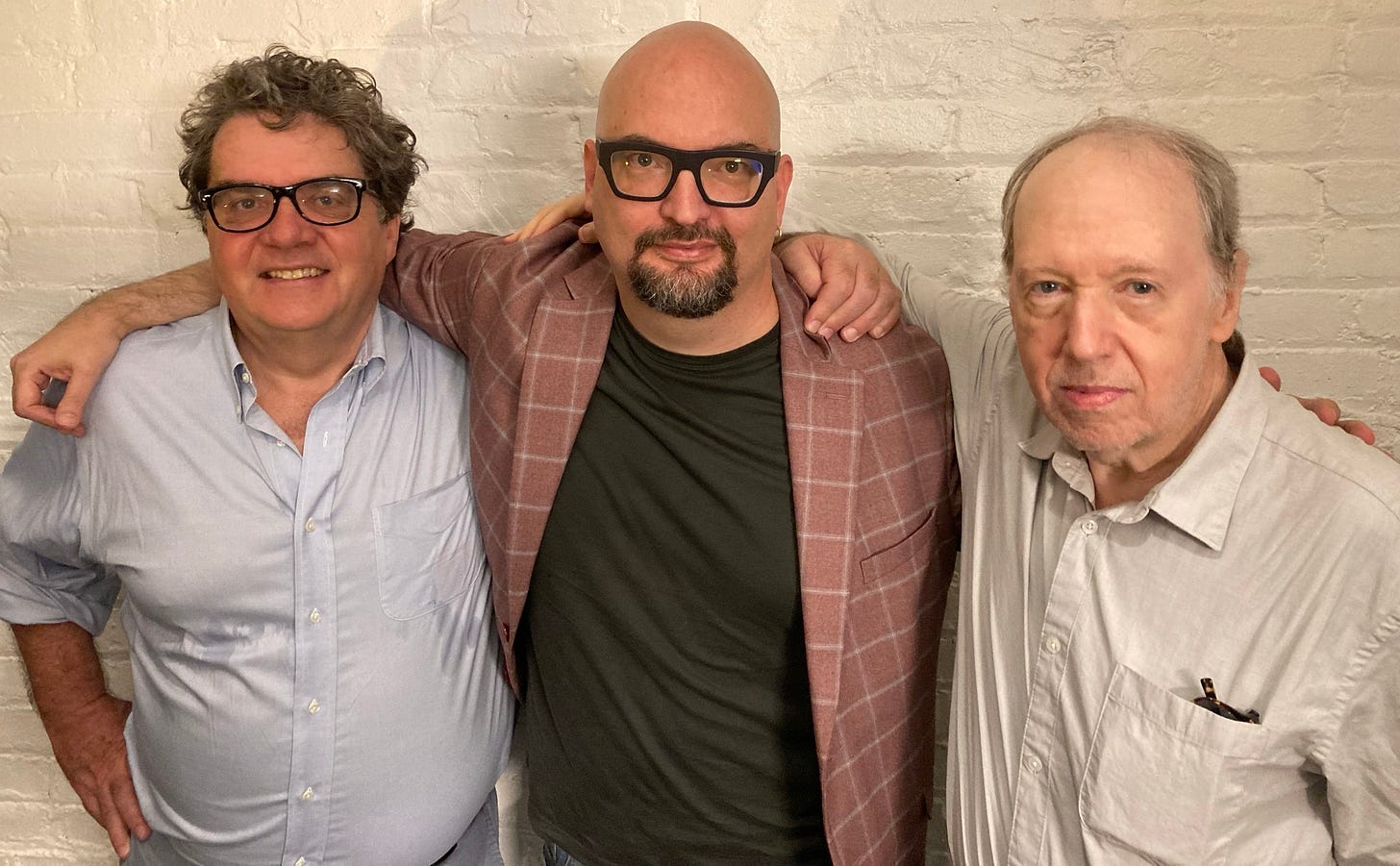
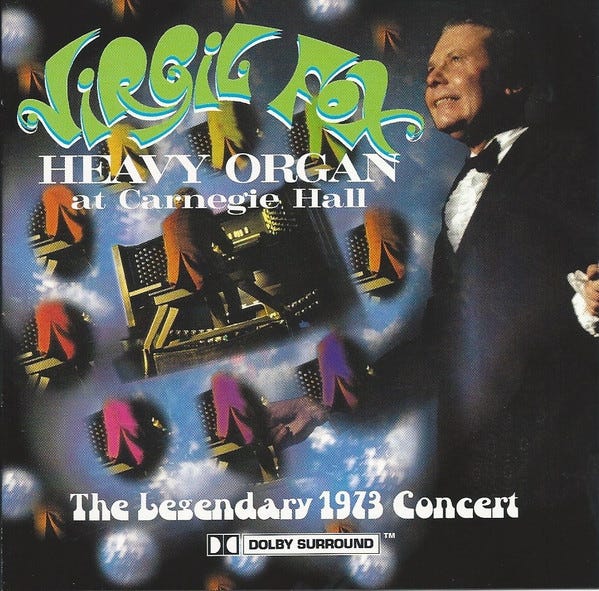
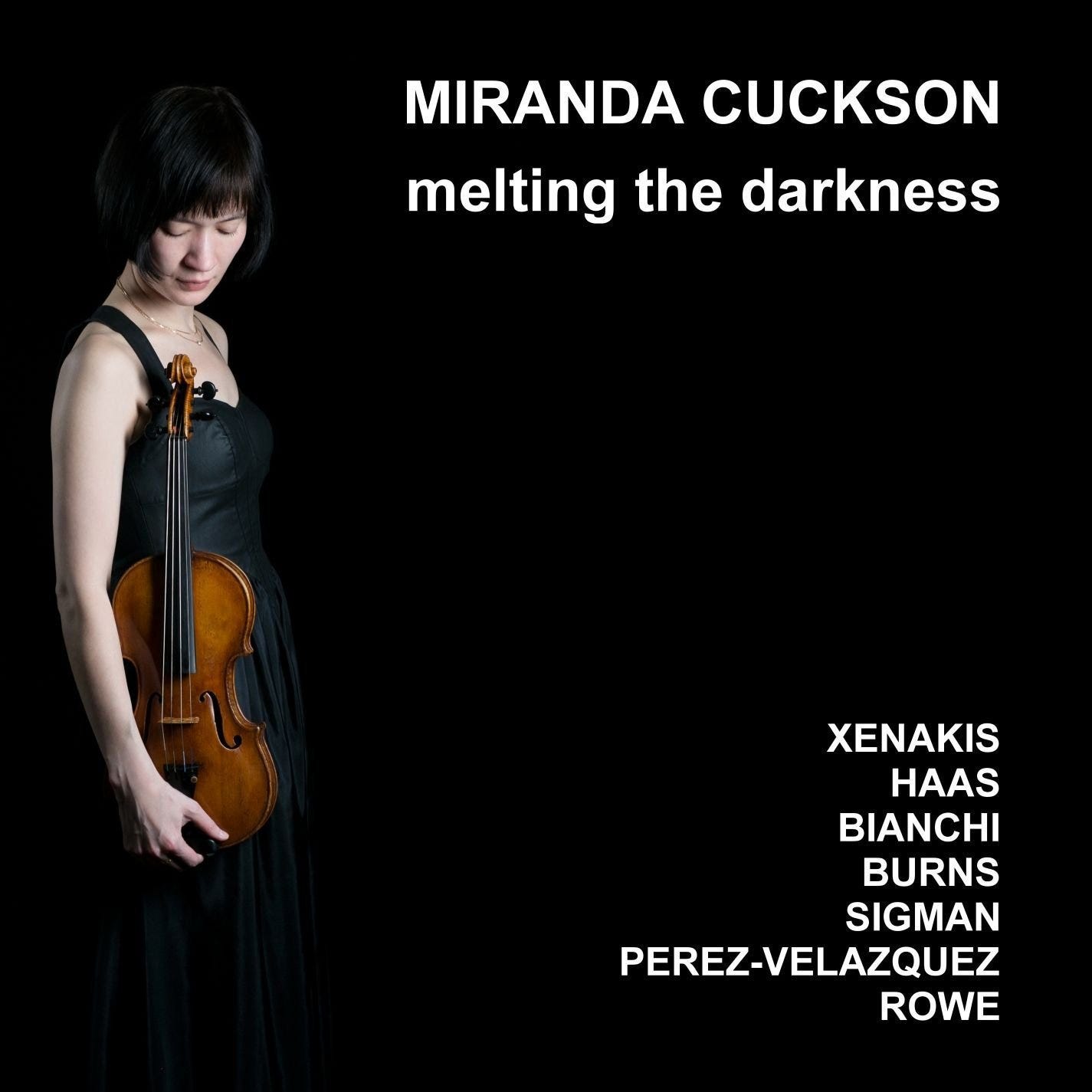
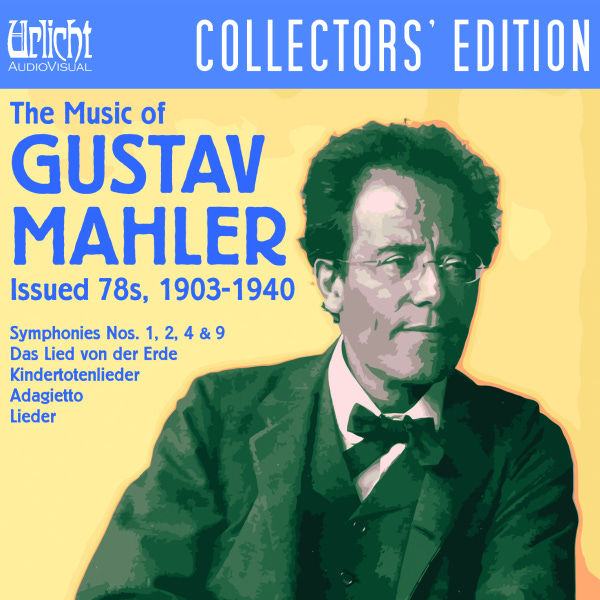

It seems like these people straddle, survey and engrave fin de siecle and the future, and Ethan made it into the roll call. Perhaps we need a Dr Who/multiverse reference here as a tribute… :)